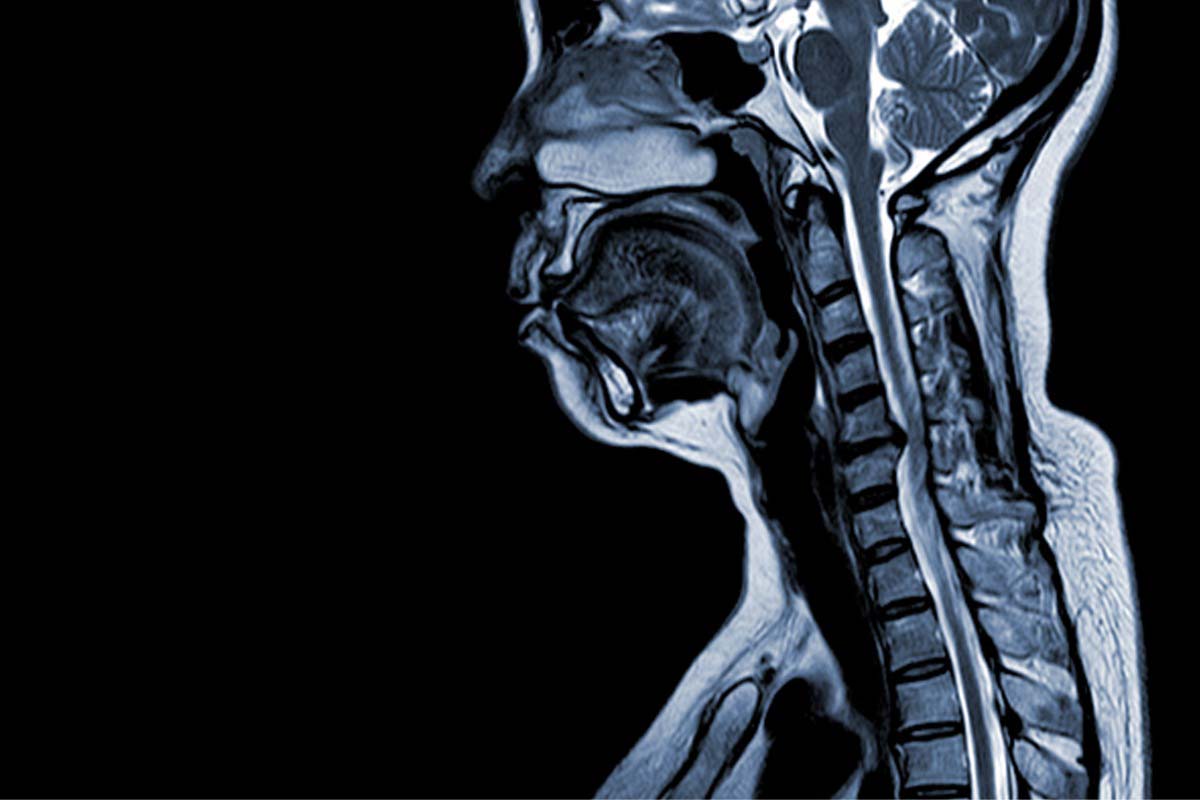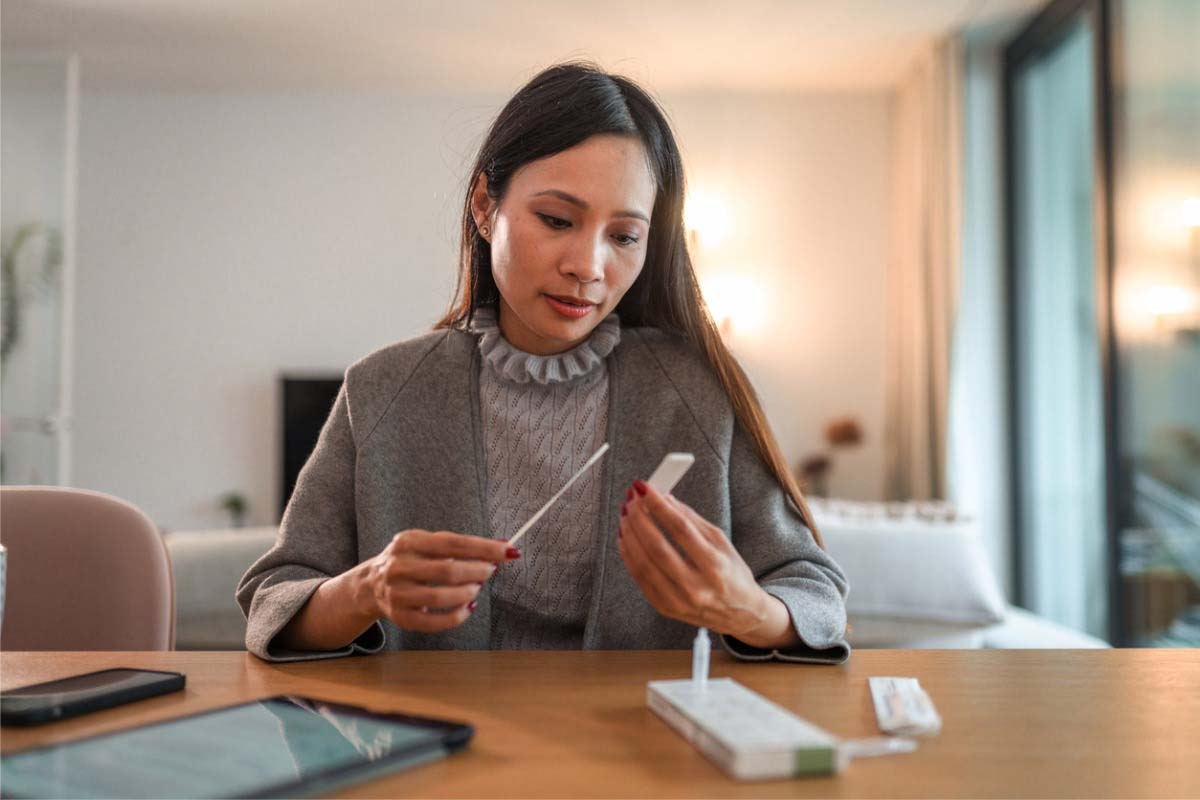

Concern about negative secondary outcomes of the coronavirus disease 2019 (COVID-19) pandemic, including risk of increased suicide mortality, has recently been reported.1,2 The main objective of this study was to determine the prevalence of passive suicidal ideation in a sample of the general Spanish population early in the COVID-19 pandemic and lockdown and to characterize factors associated with such thoughts.
Methods
This study is a secondary analysis of a cross-sectional online survey that was designed to assess the early psychological impact of the COVID-19 pandemic and lockdown in the Spanish population aged 18 years or over and conducted between March 19 and 26, 2020. Detailed study procedures are described elsewhere.3 The study was conducted according to the ethical principles of the Declaration of Helsinki. The survey consisted of an ad hoc sociodemographic and clinical questionnaire and the Spanish version of the Depression, Anxiety and Stress Scale (DASS-21).4 Logistic regression models (forward stepwise selection) were estimated to determine independent factors associated with “passive suicidal ideation during past 7 days” (no/yes), and odds ratios (ORs) and 95% confidence intervals (CIs) were calculated. IBM SPSS 24.00, IBM Corp, was used for all data analyses, and the P value for significance was set at P < .05.
Results
The total sample included 21,207 participants (mean age [SD] = 39.7 years [14.00]; females, n = 14,768 [69.6%]). Survey responses showed that 1,873 responders (8.8%) had experienced passive suicidal ideation during the past 7 days. The “yes” and “no” groups of responders were statistically differentiated with regard to all study variables with the exception of having family/friends infected with COVID-19 and living with people infected with COVID-19 (Table 1). A logistic regression model, including all significant variables from bivariate analyses, was run to assess variables associated with passive suicidal ideation.
Protective factors against passive suicidal ideation were female sex (OR [95% CI] = 0.675 [0.589-0.774], P < .001), being married or living as married (OR [95% CI] = 0.767 [0.653-0.902], P = .001), working (employed: OR [95% CI] = 0.711 [0.567-0.891], P = .003; self-employed: OR [95% CI] = 0.706 [0.533-0.935], P = .015; civil servant: OR [95% CI] = 0.650 [0.494-0.857], P = .002), living with 1 other person (OR [95% CI] = 0.799 [0.660-0.968], P = .022); having dependent children (OR [95% CI] = 0.581 [0.482-0.701], P < .001), and being able to enjoy free time (OR [95% CI] = 0.371 [0.319-0.431], P < .001).
Risk factors for passive suicidal ideation were very low income (< €500: OR [95% CI] = 1.269 [1.023-1.573], P = .030), having elderly dependents (OR [95% CI] = 1.217 [1.010-1.467], P = .039), having a personal history of past/current mental disorder (OR [95% CI] = 1.578 [1.361-1.828], OR [95% CI] = 2.313 [2.008-2.665], respectively, P < .001), and experiencing DASS-21 depression, anxiety, or stress symptoms (OR [95% CI] = 12.193 [9.891-15.031], OR [95% CI] = 1.815 [1.577-2.088], OR [95% CI] = 1.826 [1.599-2.085], respectively, P < .001).
Discussion
To our knowledge, this study is the first to show sociodemographic and clinical factors associated with passive suicidal ideation in a sample of the general population during the COVID-19 pandemic and lockdown. Prior data suggest a lifetime prevalence of suicidal ideation in the general Spanish population of around 3.7%.5 Unfortunately, no data about passive suicidal ideation in the general Spanish population are available. This prevents us from discussing the possibility that the rate of passive suicidal ideation may or may not have risen during the first weeks of the pandemic and lockdown. However, it has been reported that passive suicidal ideation could be the first rung on a ladder toward suicidal behavior.6 Paykel et al6 confirmed that steps between “feeling that life is not worth living” and a suicide attempt are additive in Faravelli’s sense7; that is, a suicide attempt must be preceded by such feelings.
The main limitation is the cross-sectional online nature of the study, which precludes establishing causality. The low percentage of people who were tested (PCR and antibody tests) at the beginning of the pandemic could contribute to the lack of association between being personally affected by COVID-19 and passive suicidal ideation. Finally, no questions about personally knowing someone who died of COVID-19 were included in the questionnaire. However, in line with Pfefferbaum and North,8 our data suggest the existence of some protective and risk factors associated with passive suicidal ideation early in the COVID-19 pandemic and lockdown in Spain and could contribute to better monitoring of psychosocial needs.
Published online: October 6, 2020.
Author contributions: Concept and design: Drs Garc×a-Alvarez, de la Fuente-Tomás, Garc×a-Portilla, Sáiz, and Bobes. Acquisition, analysis, or interpretation of data: all authors. Drafting of the manuscript: Dr Sáiz. Statistical analysis: all authors. Critical revision of the manuscript for important intellectual content: all authors reviewed all drafts and gave the final approval.
Potential conflicts of interest: None reported.
Funding/support: This work was partly supported by the Government of the Principality of Asturias PCTI-2018-2022 IDI/2018/235, the CIBERSAM, and Fondos Europeos de Desarrollo Regional (FEDER), and Fundación para la Investigación e Innovación Biosanitaria del Principado de Asturias (FINBA).
Role of the sponsor: The funding organizations had no role in the design and conduct of the study; collection, management, analysis, and interpretation of the data; preparation, review, and approval of the manuscript; or decision to submit the manuscript for publication.
Acknowledgments: The authors thank Sharon Grevet for her English assistance.
REFERENCES
1.Courtet P, Olié E, Debien C, et al. Keep socially (but not physically) connected and carry on: preventing suicide in the age of COVID-19. J Clin Psychiatry. 2020;81(3):20com13370. PubMed CrossRef
2.Reger MA, Stanley IH, Joiner TE. Suicide mortality and coronavirus disease 2019: a perfect storm? [published online ahead of print April 10, 2020] JAMA Psychiatry. PubMed CrossRef
3.Garc×a-Alvarez L, de la Fuente-Tomás L, Garc×a-Portilla MP, et al. Early impact of the 2019 coronavirus disease (COVID-19) pandemic and lockdown in a large Spanish sample. J Glob Health. 2020;10(2):020505.
4.Bados A, Solanas A, Andres R. Psychometric properties of the Spanish version of Depression, Anxiety and Stress Scales (DASS). Psicothema. 2005;17(4):679-683.
5.Miret M, Caballero FF, Huerta-Ram×rez R, et al. Factors associated with suicidal ideation and attempts in Spain for different age groups. Prevalence before and after the onset of the economic crisis. J Affect Disord. 2014;163:1-9. PubMed CrossRef
6.Paykel ES, Myers JK, Lindenthal JJ, et al. Suicidal feelings in the general population: a prevalence study. Br J Psychiatry. 1974;124(0):460-469. PubMed CrossRef
7.Faravelli C. Assessment of psychopathology. Psychother Psychosom. 2004;73(3):139-141. PubMed CrossRef
8.Pfefferbaum B, North CS. Mental health and the COVID-19 pandemic. N Engl J Med. 2020;383(6):510-512. PubMed CrossRef
aDepartment of Psychiatry, Universidad de Oviedo, Oviedo, Spain
bCentro de Investigación Biomédica en Red de Salud Mental (CIBERSAM), Oviedo, Spain
cInstituto de Investigación Sanitaria del Principado de Asturias (ISPA), Oviedo, Spain
dInstituto Universitario de Neurociencias del Principado de Asturias (INEUROPA), Oviedo, Spain
eServicio de Salud del Principado de Asturias (SESPA) Oviedo, Spain
fDepartment of Psychology, Universidad de Oviedo, Oviedo, Spain
*Corresponding author: Pilar A. Sáiz, PhD, Department of Psychiatry-CIBERSAM, School of Medicine, University of Oviedo, Julián Claver×a, sn, 33006 Oviedo, Spain ([email protected]).
J Clin Psychiatry 2020;81(6):20l13421
To cite: Sáiz PA, de la Fuente-Tomas L, Garc×a-Alvarez L, et al. Prevalence of passive suicidal ideation in the early stage of the coronavirus disease 2019 (COVID-19) pandemic and lockdown in a large Spanish sample. J Clin Psychiatry. 2020;81(6):20l13421.
To share: https://doi.org/10.4088/JCP.20l13421
© Copyright 2020 Physicians Postgraduate Press, Inc.
Editor’s Note: We encourage authors to submit papers for consideration as a part of our Focus on Suicide section. Please contact Philippe Courtet, MD, PhD, at [email protected].a
This PDF is free for all visitors!





